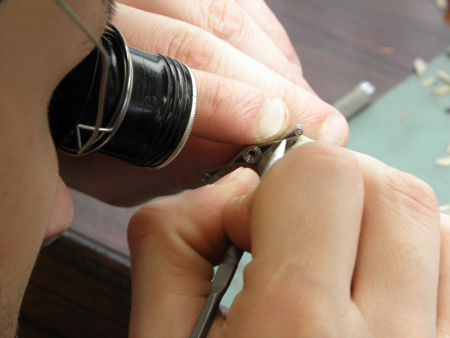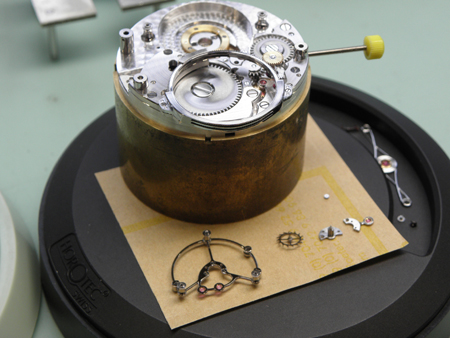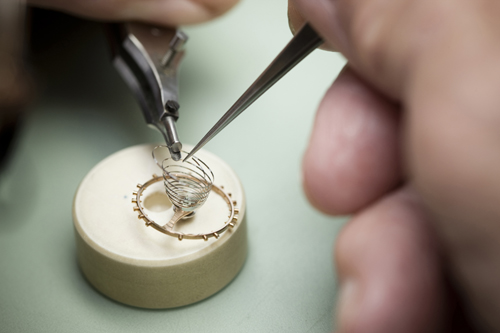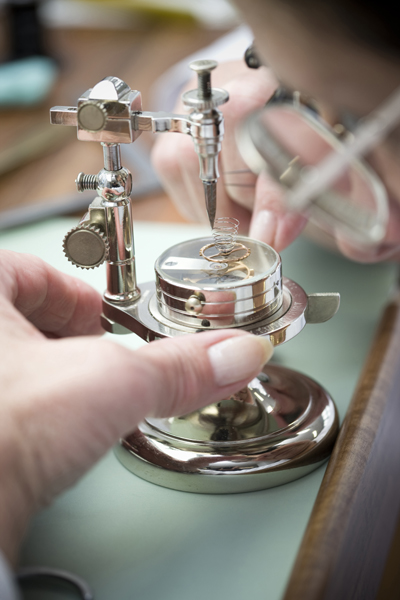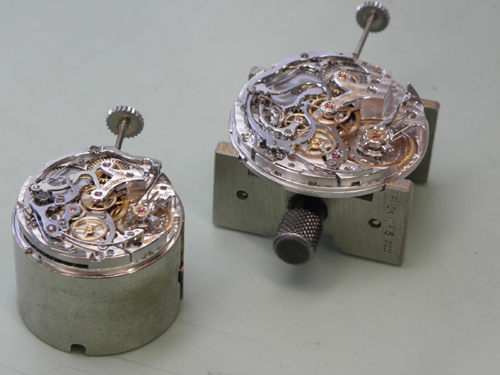Recently, in Switzerland, we had the opportunity to take a private tour of the small, exclusive Montblanc watch factory in Villeret that began as Minerva. Here, every single piece of every single watch movement (except the base plate) is made by hand, polished by hand and assembled by hand. Even the hairsprings are made in-house. Just 250 watches are born out of this workshop a year – and all carry the name Minerva on the movement and Montblanc, Villeret on the dial.
The Minerva watch brand has roots dating back to 1858, when Charles Ivan Robert and his brother Hyppolite purchased the factory in Villeret and began to create watches under the H. & C. Robert name. The workshops were soon re-named Minerva, after the Roman goddess of reason and the brand went on throughout the 1900s to win awards and become a leader in the field. In 2006, the Richemont Group purchased Minerva — later “gifting” it to the Montblanc brand, which continued with the exclusivity of high-watchmaking done there.
Upon entering the workshops today, things look very much like they did 150 years ago. The tools of the trade are hand-run machines that yield traditional techniques of watchmaking. The Minerva name has been changed to Villeret, reflecting the brand’s tiny hometown nestled in the Jura Mountains, and the name to be carried on the dial of the Montblanc watches made there.
Whereas in many watch factories, a dozen or more CNC machines exist, along with a great deal of CAD equipment, at Villeret, just three CNC machines are used – strictly for the initial cutting of the base plates. Thereafter, everything – every screw hole, even –is made by hand using a traditional hand tools and machines. The making of a single screw
hole in the base plate takes three to four different operations and takes hours to complete. The polishing, angling and finishing of each movement component takes days, and then the assembly of a final movement can take up to six weeks to build depending on its complexity.
Easily setting Villeret apart is the fact that the company makes its own hair springs — a tedious and time-consuming job. Essentially – a top-secret alloy is created and spun in threads onto large bobbins that are then placed on machines. The operators of those machines stretch the alloy to get it incredibly thin. Four strands of thread are then hand-wound into the
initial spiral that will be set onto the balance wheel. One person is responsible correctly setting the spiral to the proper regulating speed, and for cutting the spring at the precisely right spot for optimum performance. Villeret also has a custom watch department, but that is another story. Stay tuned.



